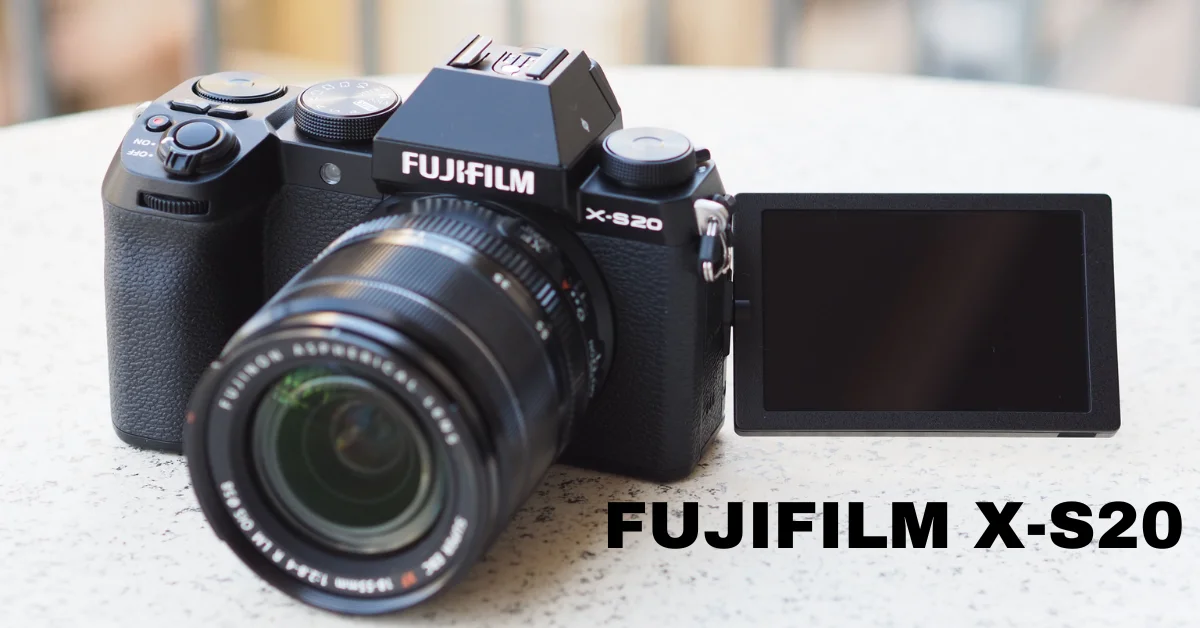Fujifilm has just released the X-S20, its latest APS-C model. It costs $1299, yet despite being one of Fuji’s most cheap cameras, it contains specs that compete with the X-T5. The two cameras appear very different from the outside, and the price difference is significant. Comparable capabilities, on the other hand, portray a different narrative.
So, should you spend the extra money on the new X-S20 or continue with the tried-and-true X-T5? We checked the spec sheets and discovered the following.
Fujifilm X-s20 Release Date And Pricing
The Fujifilm X-S20 was announced on May 25, 2023, is available for preorder now, and will be released on June 29, 2023.
The recommended retail price is $1299 as a body only, a slight increase in pricing over its predecessor, which launched at $999 in 2020.
Fujifilm X USA tweeted about their upcoming camera, which you can see below:
🚨JUST ANNOUNCED: FUJIFILM #XS20 AND FUJINON XF8mmF3.5 R WR🚨
Both are expected to be available in late June!
X-S20 MSRP: $1,299.95 – Learn More: https://t.co/tdrHBxB5f9
XF8mmF3.5 R WR MSRP: $799.95 – Learn More: https://t.co/kF07U2npWv pic.twitter.com/PCPgfT7IWC
— FUJIFILM X/GFX USA (@FujifilmX_US) May 24, 2023
Fujifilm X-s20 Design
- X-S20: Flip-out screen and modern hybrid controls
- X-T5: Tilting screen and vintage ISO, Shutter, and EV comp dials
The design of these two cameras is vastly different. To begin with, the X-S20 is significantly smaller and over 70 grams lighter than the X-T5. It’s not a huge difference, but it’s something to think about if you like to travel light. The form is also extremely different. The X-S20 has a smaller body and a grip that sticks out more, whereas the X-T5 is thicker throughout and the grip sticks out less.
The other distinctions are pretty obvious. The X-T5 features Fujifilm’s characteristic vintage dials across the top of the camera, letting you to manually adjust your ISO, shutter speed, and EV correction via dedicated controls.
The X-S20, on the other hand, opts for a more modern hybrid design that will seem more familiar to shooters who have previously used other brands. This implies that you get the standard mode selection dial as well as three programmable wheels elsewhere.
The back button layout on both cameras is similar, but the X-S20 simplifies things by removing the X-T5’s direction buttons. Both models have an AF selection joystick and may be controlled via touchscreen.

The design of the LCD is another significant distinction between these two bodies. The X-S20 has a complete flip-out LCD, which is standard on modern hybrid cameras. Instead, the X-T5 has a three-way tilting design. Some people prefer tilting screens, which are particularly useful for sneaky street photography, but we believe the flip-out form is more versatile overall. Especially if you enjoy shooting videos and filming yourself vlog-style.
Connectivity And Visual Displays
- X-S20: 3-inch 1.84 million dot LCD, 2.36 million dot OLED EVF
- X-T5: 3-inch 1.84 million dot LCD, 3.69 million dot OLED EVF
The connectivity on both cameras is, for the most part, the same. They both have a USB-C port, a micro HDMI port, a 3.5mm microphone connection, and record to SD cards, albeit the X-T5 has two SD card slots and the X-S20 just has one.
There are several other notable changes as well. The X-T5 lacks a headphone jack, so you’ll need to utilize a USB-C dongle to monitor audio, but the X-S20 has a dedicated headphone connector. It does, however, remove the remote trigger port, instead combining it into the same 3.5mm socket, and you may toggle between them in the menu.
This is a good choice in our opinion, because you’ll rarely need to use a remote trigger and headphones at the same time, so the design saves space without sacrificing much functionality.
In practice, this means that the X-T5 EVF will seem crisper and larger through the eyepiece, making manually focused pictures easier to nail. However, the higher resolution means that it will drain the battery slightly faster when in use.
Fujifilm X-s20 Photo Highlights
- X-S20: 8 fps mechanical burst shooting, 30 fps electronic (1.25x crop)
- X-T5: 15 fps mechanical burst shooting, 20 fps electronic (1.29x crop)
When it comes to still photography, the greatest difference between these two models is that the X-T5 has a far better resolution – 40.2MP vs. 26.1MP.
So, if you know you’ll need photographs for large format printing or simply want the option of cropping in after the fact, the X-T5 is probably the way to go.However, the distinctions are not as evident elsewhere. When utilizing the mechanical shutter, the X-T5 is faster, but the X-S20 is faster when using the electronic shutter.

The X-S20 can shoot electronic bursts at up to 20fps without cropping, while bursts at 30fps are cropped by 1.29x. In comparison, the X-T5 can shoot up to 20fps bursts with a greater 1.29x crop and a maximum of 13fps without the crop.
It’s also worth noting that the X-T5 has a lot more autofocus points due to its higher resolution sensor, yet the X-S20 came with a more modern autofocus technology overall. The X-T5’s firmware can be updated to take use of the additional AF modes, so there won’t be much of a difference in practice.
Regarding the Technology, we have penned an article. You can view the links in the following links:
- How To Download Tech Nukti Gold Zip Lock Screen App?
- What Chapter Does Zoro Defeat King? Never Ending Motivation
Fujifilm X-s20 Video Features
- X-S20: Up to 6.2K 30fps / 4K 60fps (1.18x crop) / 1080p 240fps video
- X-T5: Up to 6.2K 30fps / 4K 60fps / 4K HQ 30fps / 1080p 240fps video
On paper, it appears that the two cameras can shoot at the same video resolutions, but there’s a little more to the tale. True, both top out at 6.2k 30fps (open gate) and 60fps in 4K, but the X-S20 requires a 1.18x crop at 4K frame rates above 30p, whereas the X-T5 has none.
A 1.18x crop is doable, at least for us, but what may be more crucial is that the X-S20 lacks the 4K HQ option. This setting on the X-T5 oversamples from 6.2K to produce a cleaner and more detailed 4K image.
When filming in 4K, the X-T5 offers a digital zoom mode that exploits its high-resolution sensor to enable for up to 2x zoom with very minimal quality loss. The X-S20, with its relatively low-resolution sensor, is incapable of doing so.
The X-S20 does, however, include a new vlog mode. This simplifies controls for beginning shooters and moves more controls to the touchscreen, allowing you to use them while filming yourself. It also includes a Product Priority autofocus option, which makes it easier to highlight products while filming a review.
Otherwise, the cameras can both record at up to 10-bit 4:2:2 internally and output ProRes RAW and Blackmagic RAW over HDMI. The IBIS mechanism on both cameras (as well as the X-H2 and X-H2S) is the same.
Conclusion: As always, it is dependent on what you require from a camera and how you prefer to shoot. We’re hybrid photographers that shoot both images and video, and the X-S20 is the most enticing camera to us.


Leave a Reply